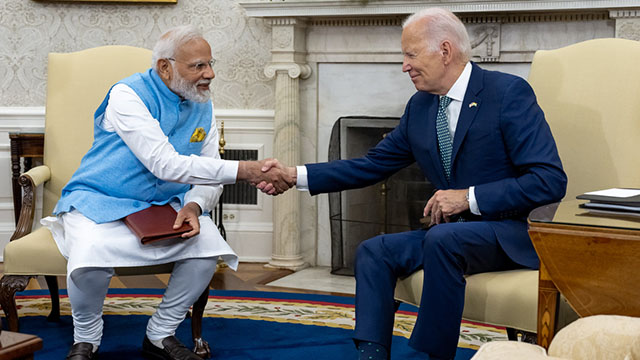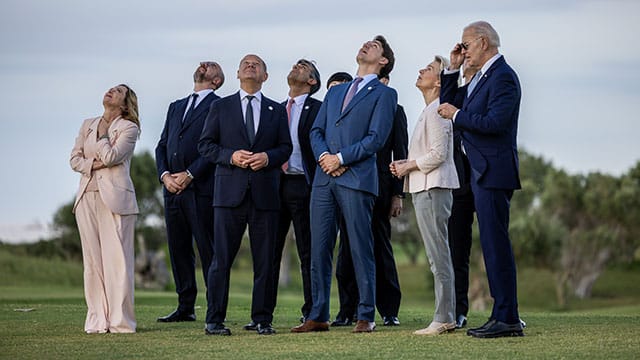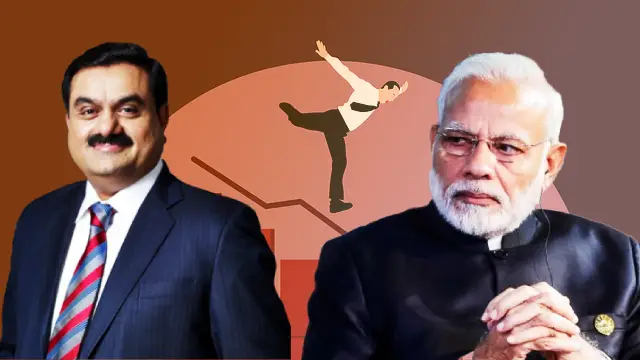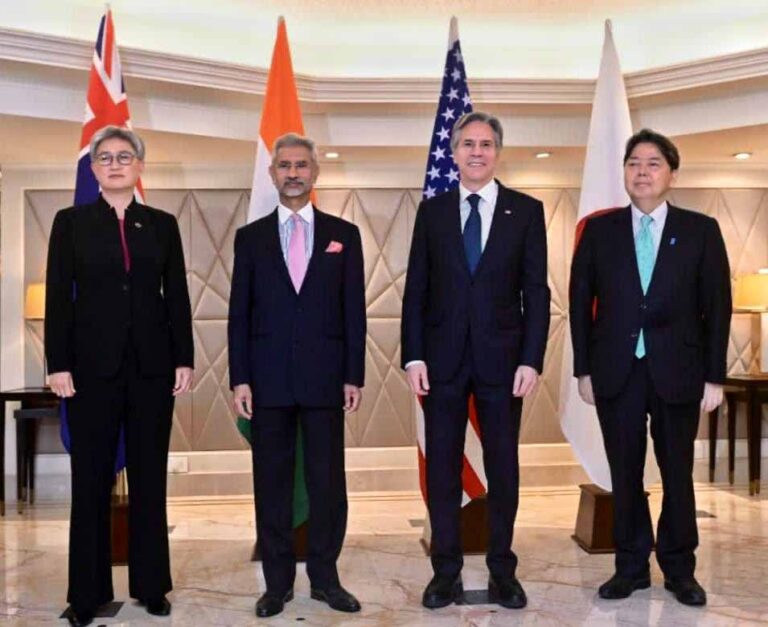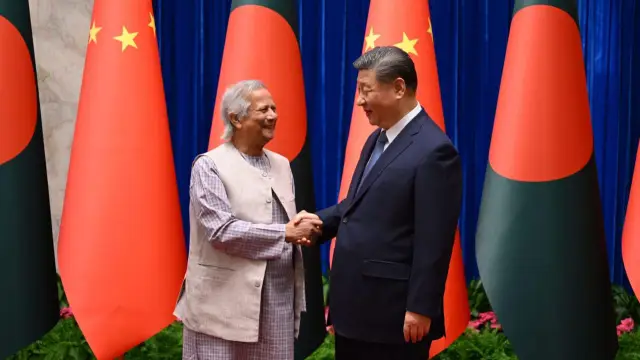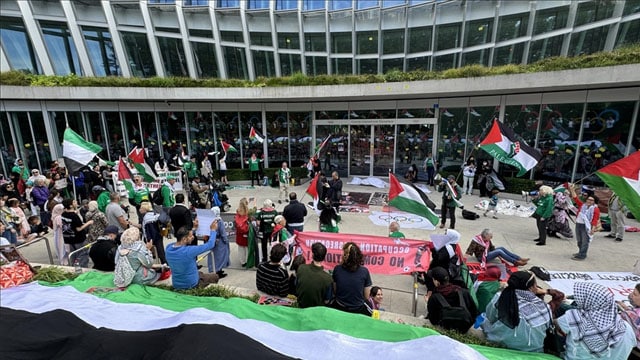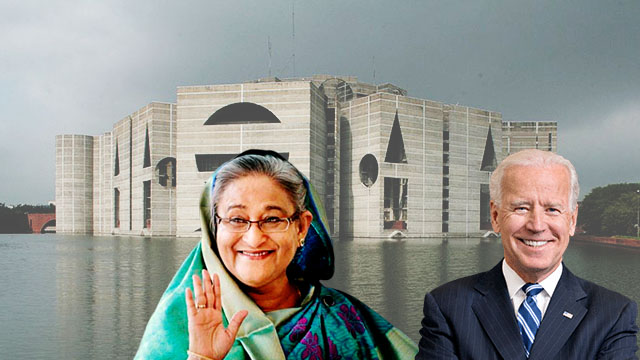Prime Minister Narendra Modi’s maiden state visit to the US grabbed the attention of the global press due to the crucial discussions he had with President Joe Biden. The grandiose with which the White House welcomed Modi exemplifies the importance of India to the Biden government’s geopolitical matrix in South Asia.
While welcoming Modi to the White House, Biden lauded the four-nation anti-China military axis named QUAD, calling it an unprecedented step that future generations will hail. It exhibited that India’s increasing importance to Washington DC isn’t merely because of its potential as a major market or as an economic powerhouse, but more due to its geographic proximity and historical hostility with China.
Although under Modi, the Indian government has taken a very careful approach regarding China, with which its bilateral trade is growing exponentially, year-on-year, it’s also exploiting the growing hostility between Beijing and Washington DC since the times of Donald Trump, Biden’s controversial predecessor, to gain more benefits from the US and its allies.
Therefore, while India has been a crucial member of the QUAD, and the only one apart from the US with a formidable military strength, it has always labelled the coalition as a security cooperation and denied ganging up against China. Still, it has been partnering with the US in the so-called “Indo-Pacific”, the Middle East and Africa to curb China’s growing influence.
Why Biden facilitated Modi’s maiden state visit to the US?
Modi’s maiden state visit to the US was more important for Washington DC in geopolitical terms than economic. Although Modi and Biden discussed and agreed on increasing the scale of the Indo-US partnership in various sectors, including defence, semiconductor manufacturing, space and artificial intelligence sectors, Washington DC’s key focus is on cajoling India to take a hyper-militant stand on China.
For the US, India’s participation as a junior partner in the “Indo-Pacific” war theatre to counter China’s assertion of its sovereignty is crucial. Although India’s friendship with Russia is a major headache for the US, which wants New Delhi to join the West’s bandwagon against Moscow on the Ukraine question, the Chinese issue far surpasses that.
Washington DC has focused on developing the “Indo-Pacific” war theatre into the next battleground. Its policy is to bring together its servile and satellite states in East and Southeast Asia, along with Australia, to forge a stronger alliance against China and secure the West’s semiconductor supply chain.
It’s precisely for this reason Biden wants Modi on board. India has played carefully in the QUAD so far and refrained from directly criticising or condemning China. The US wants India to shed the facade of neutrality regarding China if not Russia.
What did Washington DC offer Modi?
Modi’s maiden state visit to the US provided the Biden administration with an opportunity to lure him with a wide array of promises. Among them, the US has assured India that it may further liberalise its H1B visa regulations for Indian techies.
The Hindu Indian-American diaspora, mostly consisting of IT engineers and technocrats form a major support base for the Hindu right-wing in the US. If Modi can show that he has used his influence over the US to liberalise the H1B visa regulations, it will help him consolidate his federally ruling Bharatiya Janata Party’s (BJP) urban, upper-caste Hindu vote bank.
Some of the other mega deals that have been placed on the pipeline during Modi’s maiden state visit to the US include General Electric’s proposed partnership with Hindustan Aeronautics Ltd, to produce F-414 jet engines under the “Make in India” initiative. This will be a significant sensitive defence technology transfer offer for a non-US ally.
The US has agreed to sell its armed MQ-9B SeaGuardian drones to India. Micron Technology will build a $2.75bn semiconductor assembly and test facility in Gujarat, Modi’s home state. Iowa-based Des Moines will invest $800m in the project and India will finance the rest.
Also, the US-based Applied will launch a new semiconductor centre for commercialisation and innovation in India, and Lam Research, another semiconductor manufacturing equipment company, will start a training programme for 60,000 Indian engineers.
It’s not clear though how India can provide competitive leverage to the global firms in semiconductor manufacturing. India still lags in expertise and doesn’t have the infrastructure present in the Southeast and East Asian countries which are the hub of semiconductor manufacturing.
India has also signed a deal with Artemis Accords, a blueprint for space exploration cooperation among nations participating in NASA’s lunar exploration plans. According to this deal, NASA and the Indian Space Research Organisation (ISRO) agreed to undertake a joint mission to the International Space Station (ISS) next year.
Apart from these, both countries have agreed to resolve the World Trade Organization (WTO) disputes to enhance bilateral trade which stood at $190bn in 2022. The Indian government will remove the retaliatory custom duty on 28 US products within 90 days. The US will remove Indian export subsidies and domestic content requirements for solar cells. However, tariffs on Indian steel and aluminium, imposed by Trump, will continue.
All these have been placed on the platter to ensure that India aligns with the US to assertively counter China in the “Indo-Pacific” war theatre. Even though India’s External Affairs Minister S Jaishankar had earlier stated that India won’t be a part of the US’s planned NATO-plus extension in Asia, the US can use the bait of extended strategic partnership to make India’s role in QUAD a vital one.
For the US, India, which is the world’s fourth-largest military power, can play a more vital role in any military conflict against China than other QUAD members like Japan or Australia. However, whether India will fall into the trap is still unclear.
Problems with the US’s promises
Although the deals have been signed with much ga-ga in Washington DC, Modi’s maiden state visit to the US can’t be called a truly successful one for India right now. On the one hand, many of these deals, especially of technology transfer, are subject to further scrutiny, on the other, they won’t be immediately implemented.
The much-hyped nuclear submarine technology transfer to Australia, a close US ally, for the AUKUS axis against China, is still stalled due to regulations that prevent the US from transferring vital defence technology outside its borders. In this case, as a non-US ally, how the Biden administration can prioritise India’s case remains an important question.
Moreover, there will be other hurdles in the defence technology sharing deals, as India, although exempted from sanctions by the US, still has a major defence partnership with Russia and has been importing a large chunk of weapons, including missiles, from Moscow.
Indo-US ties: What will be the outcome?
New Delhi’s fondness for the US has been growing ever since the neo-liberal economic model was adopted in 1991. Indo-US defence ties date much before Modi’s maiden state visit to the US.
India’s defence ties with the US expanded in 2000 when former president Bill Clinton visited India. The initiative was started by former prime minister Atal Bihari Vajpayee who belonged to Modi’s BJP.
Both countries signed the General Security of Military Information Agreement (GSOMIA) in 2002, which allowed sharing of military intelligence between them.
During Vajpayee’s reign, the US reportedly sought Indian military assistance in its Iraq aggression, which was declined by India.
Later, in 2008, India signed a controversial civilian nuclear deal with the US, during the reign of Manmohan Singh, Modi’s predecessor. The BJP had questioned the deal at that time and opposed it in the Parliament.
Under Modi-led BJP’s rule, both countries signed the Logistics Exchange Memorandum of Agreement (LEMOA) in 2016, which makes India a partial US military base for logistical purposes.
Both countries also signed the Basic Exchange and Cooperation Agreement (BECA), which allows the exchange of geospatial information between them. It’s supposed to enhance the operational efficiency of US platforms currently operated by India.
The experiences of the European countries and several others in the third world show that when a country deepens its ties with the US, it’s the latter that emerges as the winner. The sovereignty of any country isn’t respected by the US policymakers, who are driven by neocolonial ambitions.
Historically, despite India’s pursuit of a neutral and non-aligned foreign policy, New Delhi has sought a stronger alliance with the US to exert pressure on neighbours like China and Pakistan, with which it has several contentions. However, the bilateral relationship has always worked in favour of the US.
It’s clear that the US needs India more than ever, and it’s not for anything else but to checkmate the rise of China in the global arena. Whether Modi’s maiden state visit to the US hastened the process or whether India can retain its sovereignty and strategic independence, overcoming the stress of Washington DC’s geopolitical ambitions is yet to be seen.
Tanmoy Ibrahim is a journalist who writes extensively on geopolitics and political economy. During his two-decade-long career, he has written extensively on the economic aspects behind the rise of the ultra-right forces and communalism in India. A life-long student of the dynamic praxis of geopolitics, he emphasises the need for a multipolar world with multilateral ties for a peaceful future for all.

